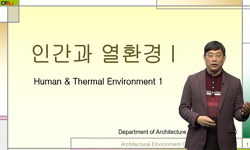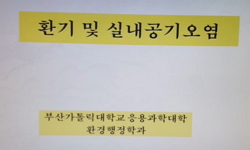Students spend an average of 4 to 14 hours a day in Educational Facilities. Therefore, their health is greatly affected by the Indoor Air Quality of Educational Facilities. The quality of air in Educational Facilities has been deteriorated in recent y...
http://chineseinput.net/에서 pinyin(병음)방식으로 중국어를 변환할 수 있습니다.
변환된 중국어를 복사하여 사용하시면 됩니다.
- 中文 을 입력하시려면 zhongwen을 입력하시고 space를누르시면됩니다.
- 北京 을 입력하시려면 beijing을 입력하시고 space를 누르시면 됩니다.
인천지역 교육시설의 건축환경과 실내공기질의 상관성 분석 = The Relativity between Architectural Environment and Indoor Air Quality of Educational Facilities in Incheon
한글로보기부가정보
다국어 초록 (Multilingual Abstract)
Students spend an average of 4 to 14 hours a day in Educational Facilities. Therefore, their health is greatly affected by the Indoor Air Quality of Educational Facilities. The quality of air in Educational Facilities has been deteriorated in recent years due to diversification of construction materials, increased application of chemical substances, and the lack of ventilation systems incorporated in Educational Facilities. As a result, students who spend great deal of their time in newly constructed Educational Facilities suffer from "Sick School Syndrome", a phenomenon similar to the "Sick House Syndrome". This has a potential of becoming a serious health concern, especially among young students who have not fully developed strong immune systems. Currently, the rules and regulations on the Indoor Air Quality as enforced by the Ministry of Education is less strict than that of the Ministry of Environment. On top of this, there are only few studies conducted on the Air Quality of classrooms, not to mention the complete absence of study done on the correlations between the Educational Facilities air quality and the building construction conditions. Based on the aforementioned background, this study presents some primary data based on the survey of classroom construction conditions and the measurements taken on the Air Quality of Educational Facilities. Relationships between the year of construction, the designs of Educational Facilities, and the density of pollutants are also analyzed and are included in this study. To summarize, there is a direct correlation between the year of classroom construction and the density of harmful chemicals present in Educational Facilities.
국문 초록 (Abstract)
2008년 현재 전국의 교육시설(유치원, 초등학교·중학교·고등학교, 대학교)은 19441개로, 신도시건설과 교육시설 개선사업으로 교육시설 수는 매년 증가하고 있다. 한편, 최근 건물에서는 건축...
2008년 현재 전국의 교육시설(유치원, 초등학교·중학교·고등학교, 대학교)은 19441개로, 신도시건설과 교육시설 개선사업으로 교육시설 수는 매년 증가하고 있다. 한편, 최근 건물에서는 건축자재의 화학물질 사용증대, 고기밀화 및 환기부족 등의 원인으로 실내공기질 면에서 많은 문제점이 발생하고 있으며, 교육시설에 있어서도 학생들은 장시간(4h~14h/1day) 실내에서 생활하기 때문에 교실의 실내공기질은 학생들의 건강 및 쾌적성 면에서 매우 중요한 요소이다. 신체적으로 미성숙하고 면역기능이 발달되지 않은 학생들은 실내공기오염으로 심각한 피해를 볼 수 있다.
한편, 교육시설은 면적당 재실자 수가 일반 사무실보다 4배 이상이고, 교실에서 다양한 교과목의 교육으로 인해 여러 종류의 오염물질이 존재할 수 있는데 교육과학기술부의 「학교보건법」은 환경부의 「다중이용시설 등의 실내공기질관리법」에 비해서 내용이 다소 미비한 상황이며, 교육시설의 실내공기환경에 관련된 연구 또한 부족한 실정이다.
교육시설의 실내공기질에 관한 기존의 연구로는, 학교 실내공기질 현장측정 및 성능평가, 친환경 자재, 환기시스템) 등에 관한 연구가 있으나 교육시설의 건축환경과 실내공기질의 상관성 분석에 관한 연구는 찾아보기 힘든 상황이다.
이러한 배경에서, 본 연구에서는 교육시설의 건축환경과 실내공기질의 상관성 분석을 목적으로 인천지역 교육시설을 대상으로 신개축년도와 실내마감재 및 가구 등의 건축조건에 대한 조사와 실내온열환경, 일산화탄소(CO), 이산화탄소(CO₂), 미세먼지(PM10), 포름알데히드(HCHO), 총휘발성유기화합물(TVOC), 각종 휘발성유기화합물질(VOCs)에 대한 측정 및 결과를 바탕으로 그들의 상관성에 대해 분석하였다.
목차 (Table of Contents)
- 국문요약 = 1
- Ⅰ. 서론 = 2
- 1.1 연구의 배경 및 목적 = 2
- 1.2 교육시설의 실내공기질 연구동향 = 4
- 1.2.1 유치원의 실내공기질 연구동향 = 4
- 국문요약 = 1
- Ⅰ. 서론 = 2
- 1.1 연구의 배경 및 목적 = 2
- 1.2 교육시설의 실내공기질 연구동향 = 4
- 1.2.1 유치원의 실내공기질 연구동향 = 4
- 1.2.2 초중고등학교와 대학교의 실내공기질 연구동향 = 7
- 1.3 연구의 방법 및 범위 = 9
- Ⅱ. 실내공기오염에 관한 기본적 고찰 = 10
- 2.1 인천광역시 대기질 현황 = 10
- 2.2 실내공기오염의 오염원과 인체에 미치는 영향 = 15
- 2.3 국내외 실내공기질 기준 = 22
- Ⅲ. 인천지역 교육시설의 건축환경 파악 = 24
- 3.1 대상 시설의 선정기준 및 건축개요 = 24
- 3.1.1 유치원 = 24
- 3.1.2 초중고등학교 = 25
- 3.1.3 대학교 = 26
- 3.2 인천지역 교육시설의 건축환경 = 27
- 3.2.1 유치원 = 27
- 3.2.2 초중고등학교 = 32
- 3.2.3 대학교 = 36
- 3.3 소결 = 41
- Ⅳ. 인천지역 교육시설의 실내공기질 측정 = 43
- 4.1 대상시설의 실내공기질 측정 개요 = 43
- 4.2 인천지역 교육시설의 실내공기질 = 44
- 4.2.1 유치원 = 44
- 4.2.2 초중고등학교 = 50
- 4.2.3 대학교 = 60
- 4.3 소결 = 66
- Ⅴ. 인천지역 교육시설의 건축환경과 실내공기질의 상관성 분석 = 68
- 5.1 주변환경과 휘발성유기화합물농도의 상관성 = 68
- 5.1.1 유치원 = 68
- 5.1.2 초중고등학교 = 69
- 5.1.3 대학교 = 70
- 5.2 신개축연도와 오염물질농도의 상관성 = 71
- 5.2.1 유치원 = 71
- 5.2.2 초중고등학교 = 71
- 5.2.3 대학교 = 72
- 5.3 실내 마감재구성과 오염물질농도의 상관성 = 78
- 5.3.1 유치원 = 78
- 5.3.2 초중고등학교 = 81
- 5.3.3 대학교 = 86
- 5.4 소결 = 89
- Ⅵ. 결론 및 제언 = 92
- 참고문헌 = 95
- Abstract = 97












